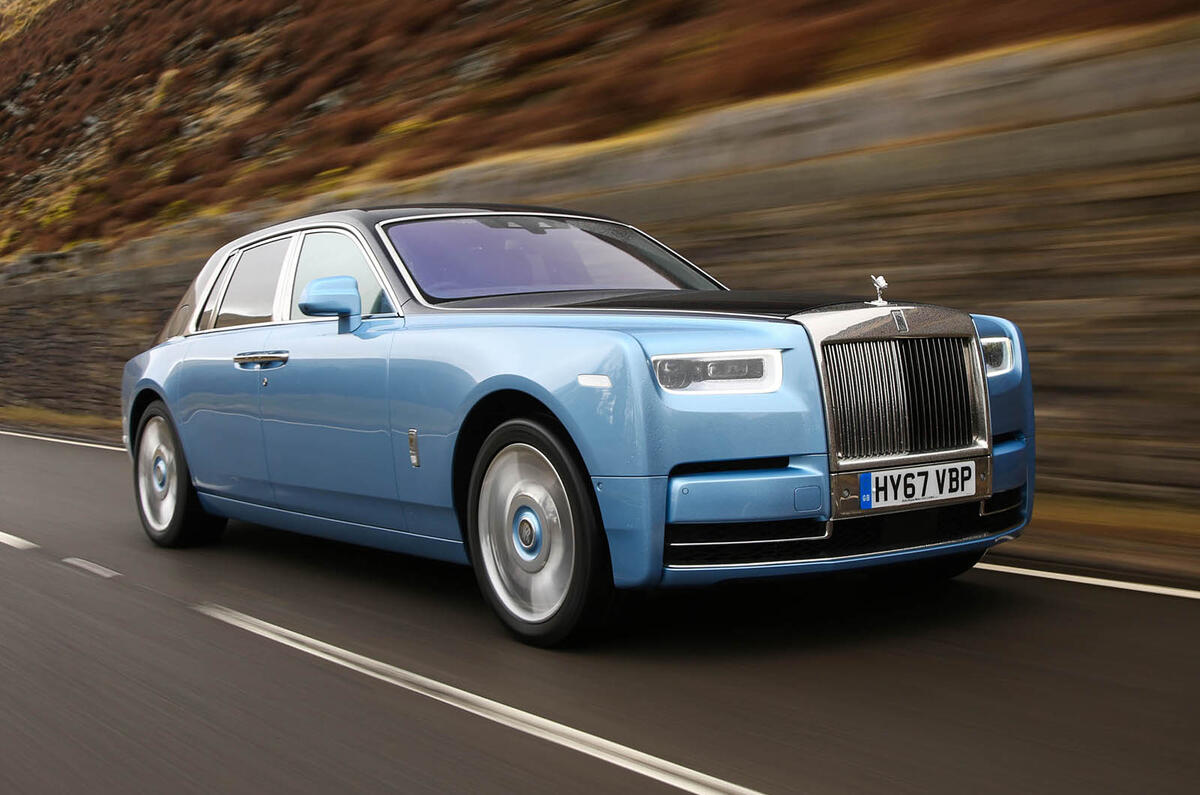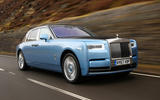What is it?
This is nothing less than the pinnacle – the very epitome – of motoring luxury, so declared this publication on the occasion of the eighth-generation Rolls-Royce Phantom’s international launch last October.
It’s not so hard to believe, is it? Rolls-Royce claims to have reduced cabin noise by as much 75% over the old Phantom, which itself was no heavy metal concert, and it has supposedly improved the driving experience, too. That’s of more significance than you might imagine, given the surprisingly high proportion of Phantom owners who actually take to the sizeable three-spoke wheel of their cars.
We’ll come onto the hardware in a moment, but first, the design, which is recognisable from the previous generation car. That wasn’t such a pretty thing, but, when it came to all-round imperiousness, it was a match for the Natural History Museum, and that hasn’t changed.
The new Phantom is perhaps a mite softer in its geometry and is notable for the tightness of its shutlines and the growth of its hand-polished 'Pantheon’ grille, which is also more smoothly integrated into the surrounding bodywork. For the record, the Spirit of Ecstasy now sits half an inch further from the road.
Having already sampled the Rolls-Royce's new flagship abroad, we’ve rather looked forward to getting the Phantom on UK roads, not least because Rolls-Royce makes some whopping claims about its ride quality. The suspension apparently makes ‘millions’ of calculations every second, reacting not only to physical inputs but also information from a windscreen-mounted camera. The eight-speed gearbox also uses satellite data to prepare for the road ahead, and there’s a layer of foam within the vast tyres to ameliorate roar.
This, we suppose, is precisely what you’d want to hear if you were spending roughly £400,000 on a car, but is it borne out on the road?






































































Join the debate
Add your comment
Edu
Edu
Fiat 500
Yes, they do look very similar but kind of echo the generic Lucas tail lights that adorned lots of British cars back in the day. The most jarring element to my eyes is the modish strip of perforated metal weaving its way across the dashboard. It looks like a cheap Bluetooth speaker has been left on an antique buffet. The matt texture does not still well with the abundance of polished chrome elsewhere. The infotaintment screen looks like it’s been lifted from a 3-series and is very poorly integrated in the overall design. The B-roads are not apparently tagged on the satnav presumably because the Phantom is too big for them.
Neither Rolls nor Bently have
Neither Rolls nor Bently have come close to capturing that svelte voluptious rear; somehow there's an odd disconnect between what appears to be an attempt to taper off and all those horrid straight lines and ironically some appaling shut lines as well.
Interesting that on this vehicle they seem to have borrowed the rear light clusters of a FIAT 500!
And all that timber on the dash ... how awkward. Like my granny's sidebaord!